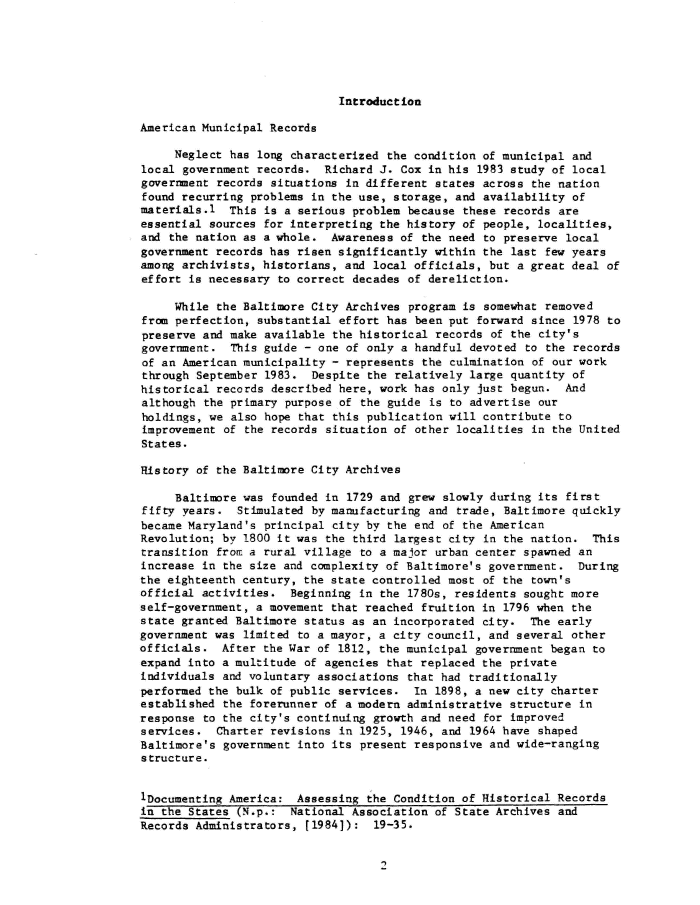|
Introduction
American Municipal Records
Neglect has long characterized the condition of municipal and
local government records. Richard J. Cox in his 1983 study of local
government records situations in different states across the nation
found recurring problems in the use, storage, and availability of
materials.l This is a serious problem because these records are
essential sources for interpreting the history of people, localities,
and the nation as a whole. Awareness of the need to preserve local
government records has risen significantly within the last few years
among archivists, historians, and local officials, but a great deal of
effort is necessary to correct decades of dereliction.
While the Baltimore City Archives program is somewhat removed
from perfection, substantial effort has been put forward since 1978 to
preserve and make available the historical records of the city's
government. This guide - one of only a handful devoted to the records
of an American municipality - represents the culmination of our work
through September 1983. Despite the relatively large quantity of
historical records described here, work has only just begun. And
although the primary purpose of the guide is to advertise our
holdings, we also hope that this publication will contribute to
improvement of the records situation of other localities in the United
States.
History of the Baltimore City Archives
Baltimore was founded in 1729 and grew slowly during its first
fifty years. Stimulated by manufacturing and trade, Baltimore quickly
became Maryland's principal city by the end of the American
Revolution; by 1800 it was the third largest city in the nation. This
transition from a rural village to a major urban center spawned an
increase in the size and complexity of Baltimore's government. During
the eighteenth century, the state controlled most of the town's
official activities. Beginning in the 1780s, residents sought more
self-government, a movement that reached fruition in 1796 when the
state granted Baltimore status as an incorporated city. The early
government was limited to a mayor, a city council, and several other
officials. After the War of 1812, the municipal government began to
expand into a multitude of agencies that replaced the private
individuals and voluntary associations that had traditionally
performed the bulk of public services. In 1898, a new city charter
established the forerunner of a modern administrative structure in
response to the city's continuing growth and need for improved
services. Charter revisions in 1925, 1946, and 1964 have shaped
Baltimore's government into its present responsive and wide-ranging
structure.
1Documenting America; Assessing the Condition of Historical Records
in the States (N.p.:National Association of State Archives and
Records Administrators, [1984]): 19-35.
|

